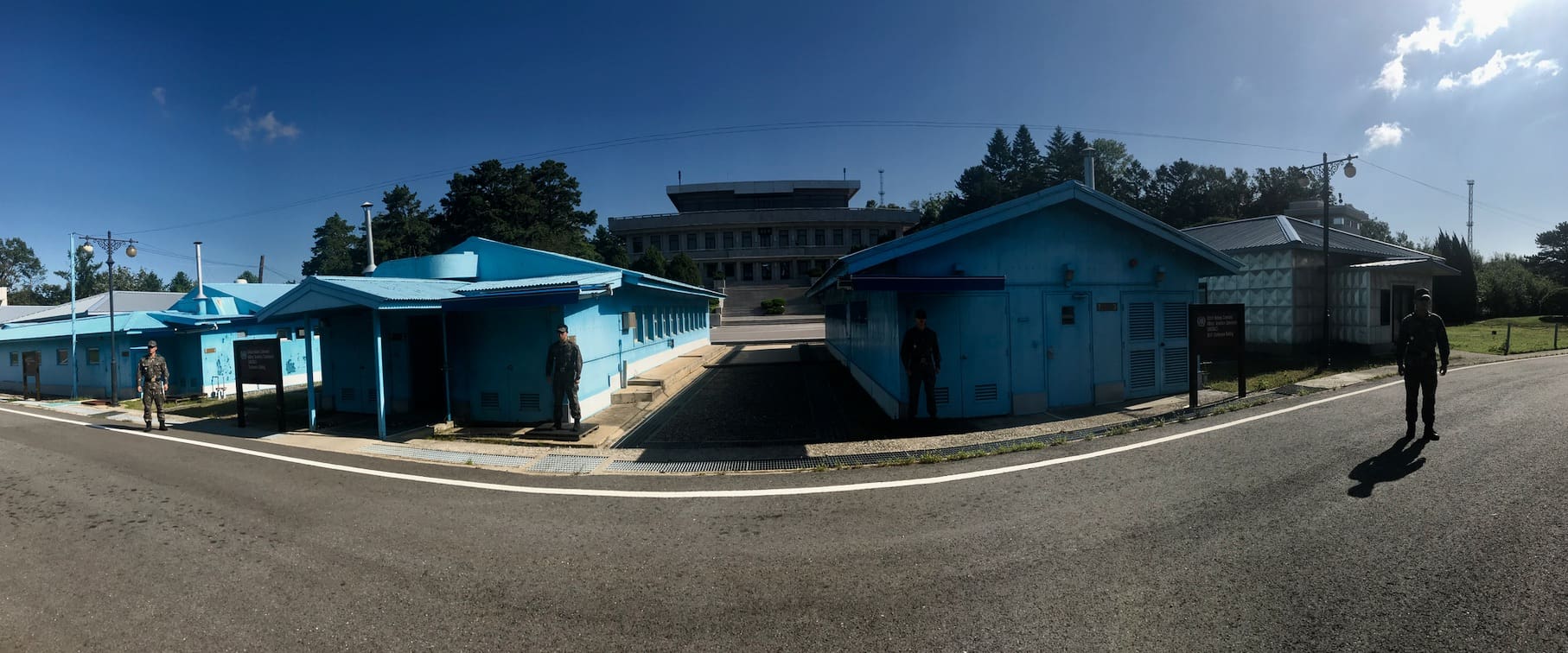by Anita Mendiratta | Sep 21, 2019
There’s something very different about an attraction versus a place of pilgrimage.
Yes, both can be icons immediately identifying a place, a people.
Yes, both attract visitors, often numbering in their millions.
Yes, both require preplanning, often involving tour guides and groups to be able to gain access, to get around.
Yes, both have the potential to be powerful source of valuable tourist dollars, or pounds, or rupees, or rubles, or any other currency.
And yes, both have the ability to offer visitors invaluable insights through rich storytelling – their reason for being, their well disguised yet profoundly important details, their role in the greater scheme of things.
Which is why as a traveller it is so easy to get busy booking a visit to an attraction, the thought of logistics distracting from what is lingering so close below the surface – its power as a sacred place. Until one comes face to face with one of these places. The number in the world is few, yet when seen, when felt, there is no question about its unique classification.
Case in point: the DMZ – the still active, 38th parallel, 200km long and 2km wide demilitarised zone between North and South Korea – the world’s last remnant of the Cold War, and front line of enduring threat of conflict yet prayers for peace.
Less than a two hour drive from the Republic of Korea’s capital city, the significance and seriousness of a visit to the DMZ begins to set in before leaving Seoul. The list of ‘must’ s and ‘must not’s is short, but clear: passports are a must, respectable clothing is a must, signing off a waiver in case of unexpected cross-border hostilities or contact with mines is a must, restrained communication is a must, photos in military zones are a must not unless given the all-clear. Careless, politically associated hand gestures and comments are a must not. Wandering off is a must not. Taking the direction of Security Escorts is a must. These are not tour guides, they are UN-assigned, conflict trained, armed officers. Respect is a must.
Suddenly, visibly and audibly, the chemistry of the group changes. Driving into the DMZ, passing through well reinforced security gates manned by well-armed officers, only the sound of the official UN bus engine can be heard. The quiet is broken only by injections of information by the Security Escort: how far we are from the border of North Korea, how many people work in the DMZ, how many pre-war descendant families live in the DMZ, how many hectares of rice fields farmers are given if they live in the DMZ compared to those outside (17 vs 2), how many mines still lay hidden in the deep grasses around us (thousands).
And then we arrive. Ground zero: JSA – the Joint Security Area.
Sacred has a colour: Hex #5b92e5, also known as UN Blue.
Sacred stirs a reaction, an almost primal reaction. Hussssssshhhhhhh.
Suddenly the spirit of entitlement that tourists often have having paid for the right to control the where, what, when and how of travel evaporates. The ‘here & now’ transcends all else. There is nothing else that matters.
Because here it is, here, right in front of us – the line that marks separation between the two Koreas. The place where, 66 years ago, where the UN overlooked an armistice signed by North and South Korea which ended the Korean War. The place where, months ago, the leaders of the two Koreas shook hands in hopes of denuclearisation and unification. The place where the sight of UN Blue symbolises enduring hope that the history books may one day, hopefully one day, write a final chapter of peace, unity and forgiveness.
To see the place seen so many times before on a television or mobile screen, to reflect on its detail, is one thing. To feel it, however, is quite another. To try to describe it is to realise one has lost their ability to speak. There are no words – only sounds, only tears.
Hussssshhhhhhh.
Humility mutes all conversation. It’s haunting. And it’s disturbing, in a really good way. Here is where history was, and continues to be, made. Here is where horror and hurt, hardship and hunger, healing and hope all collide. Here is where we are reminded, vividly and voicelessly, the blessing that we have of being able to see completely different world that reveals to us, raw and real-time, the gift of peace.
This is what separates an attraction from a place of pilgrimage.
The intensity of the meaning of this place of pilgrimage is made clear by the fact that, in these times of selfies and see-me-here, photographs actually don’t matter. Vivid captures are embossed in mind and heart while standing still in silence, knowing that you can’t actually capture what you’re seeing and feeling with a simple frame.
It’s about standing in the sun on a dry wooden blue bridge the one that connects North and South Korea shutting your eyes and just listening to the sound of crickets somewhere nearby. It’s about feeling the warmth of the Fall sun showering down, noticing tiny little droplets of water on overgrown grasses that once, only 50 years ago, hid soldiers still in their teens, ready to die for love of country. It’s the smell of pine trees. Here is where learning rises above leverage, where respect rises above rights, where silence rises above soundbytes and selfies.
The same is felt standing at the door of cell 46664 on Robben Island. The same is felt at the `Door of No Return’ in Ghana. The same is felt in but a handful of locations across the globe – places where meaning means more than holiday memories.
These are the moments when tourism becomes sacred, and when sustainability is about protecting and sustaining the spiritual value of a place, not just its economic, social, cultural, or environmental.
Because while one can put tourism infrastructure and policies in place to maximise the commercial opportunity of attractions, there are some places where commerce has no place.
Their power, their richness, is in the husssssshhhhhhhhh.

Copyright: ANITA MENDIRATTA 2019
by Anita Mendiratta | Aug 30, 2019

The United Nations General Assembly (UNGA) takes place each year in September in New York City. Uniting 193 Member States, the UNGA is, as stated by the UN, a “unique forum to discuss and work together on a wide array of international issues covered by the UN Charter, such as development, peace and security, international law, etc.”
For just under 10 days, this coming together of international leaders puts at the forefront the critical issues that we are facing in our shared world today – issues that are going to either accelerate, or challenge, our ability is one shared global community to move forward, lifting up the baseline so that all can feel a valued, contributing part of a world in which we are all working towards ensuring longterm social, economic, environmental and spiritual growth and development.
Ultimately, we need to look at the UNGA as a way of mobilising an annual global call to action.
Interestingly, and often, an individual takes the face of the UNGA, becoming the primary messenger of the UNGA’s central message. In 2019 there’s no question about who this individual will be. Her identity, and impact, is already well known across the world: Sweden’s young Greta Thunberg who has, with great courage, great conviction, and yet remarkable youth stood up and mobilized an entire generation, the next generation to moving forward as regards climate action.
Greta has become an iconic, invaluable figure for the world in terms of recognising that now, right now, decision makers must make sure that we recalibrate our actions, taking responsibility for decisions that need to be made today that will have a direct impact on our world tomorrow, especially the future of the young people who are increasingly sensitised to the fact that failure to do so will unleash untold damage to their future and the world around them.
Young Greta, making her way to the UNGA across the Atlantic, arrived into the US just a handful of days ago. Rather than flying from her homeland of Sweden to the US, following 15 days at sea she arrived in on a solar-powered sailboat, sailing into the immense sights and crowds of New York. In doing so, she carries a very important message about climate action that indeed we must all start acting. Now.
That message, however, has the risk of being oversimplified by looking at it simply as her having not taken an aircraft. Climate Action, her core message, goes beyond a form of transport. However, her activism risks drawing attention to hooks able to draw in attention and amplification, as sadly demonstrated by The Wall Street Journal, messaging out to the world that “as the 16-year-old poster child for younger generations’ climate angst, also making its way to the New World, as evidenced in the coverage of her carbon-neutral trip, was a concept that in just a few years has swept Europe: flight shame, often hashtagged in the original Swedish, #flygskam.”
The holistic message of Greta is critical: Climate Action (SDG13) needs to start now. Impact of it positively needs to happen now.
However, in today’s day and age of of social media, of hashtag activism, the heart of her wider message is being translated into a hurtful economic, social and environmental one with significant, negative consequences on the global community’s quest for sustainable global development. This, one cannot believe, was her intention, It may, however, result in its effect
The hashtag that many are applying to her and to her cause is #flightshame.
Yes, aviation is the source of carbon emissions, 2% of global emissions, that are indeed having a negative impact on the environment. This truth is not, however, one being lazily accepted by the global aviation community. Quite the opposite. For several years by the global aviation community has been investing exponential amounts of funding and intellect towards finding solutions to reduce and eliminate emissions to ensure that the growth of aviation occurs in a way that is responsible, and sustainable.
Critically, it must be understood: Aviation it not the problem – emissions are.
For this reason, formal, binding commitments have been made by nations and across the entire aviation value chain. Central to this is airlines.
Championed by IATA, the global trade association for 290 of the world’s airlines with membership representing 82% of total air traffic, aviation leaders are acutely aware of the need to take action, now, on the global challenge of climate change. For this reason they have “adopted a set of ambitious targets to mitigate CO2 emissions from air transport:
- An average improvement in fuel efficiency of 1.5% per year from 2009 to 2020
- A cap on net aviation CO2 emissions from 2020 (carbon-neutral growth)
- A reduction in net aviation CO2 emissions of 50% by 2050, relative to 2005 levels
A multi-faceted approach: the four-pillar strategy
IATA is determined to be part of the solution but insists that, in order to achieve these targets, a strong commitment is required from all stakeholders working together through the four pillars of the aviation industry strategy:
- Improved technology, including the deployment of sustainable low-carbon fuels
- More efficient aircraft operations
- Infrastructure improvements, including modernized air traffic management systems
- A single global market-based measure, to fill the remaining emissions gap”
https://www.iata.org/policy/environment/Pages/climate-change.aspx
Aviation is actively, collectively and measurably making sure that it is uplifting the global impact of its overall economic drive in a way that is not doing any environmental damage.
Again, it must be understood: Aviation it not the problem – emissions are.
Our world needs aviation.
Why? Because global travel, trade and tourism rely on opportunity creation delivered through global skies.
We must must never forget that 65 million people around the world are employed through aviation. Every single day 120,000 flights take off carrying 12 million passengers and unlocking 18.8 billion and global trade.
And then there is tourism – a sector that inspired over 1.4 billion people each year to cross international borders to learn, explore, discover. In so doing, greater understanding is established, central to embedding respect and peace across people and places, across faiths, cultures, generations and ideologies. With this Travel & Tourism supports one in 10 jobs (319 million) worldwide, unlocking 10.4% (US$8.8 trillion) of world GDP.
These metrics are vital to global growth and development, creating a strong global community in which all can participate indirectly and directly, indirectly through what tourism and trade generate across the world in terms of jobs, in terms of inclusivity and in terms of creating a stronger future. To simply hashtag and encourage people to stop flying is overtly encouraging people to stop the growth of aviation. This in turn stops the growth of the global economy, global society and its ability to positively impact the global environment through solutions for the benefit of all.
We live in a time today in which it’s very easy to pass judgment, whether it’s through flight shaming, whether making it clear that one would rather eat a veggie burger than having real beef, or making a fuss over a reusable alternative to plastic.
It’s very easy to turn these personal beliefs and behaviours into finger-pointing around those of others. We cannot live in a society in which our approach to global development is increasingly becoming about turning to the person next to us, looking at what they are doing, and then telling them what they are doing is wrong. This cannot be right.
Everything we do, every day, has a ripple effect – positive and negative. Are changes needed to many of today’s actions to accelerate climate action? Yes, but through inspiration, not accusation.
That is why the global community is focused on, specifically, the United Nations Sustainable Development Goals (SDGs) to look at the 17 avenues through which we – governments, industries, individuals – can promote development of our global community socially, economically, environmentally, culturally and spiritually. We need to look at these avenues as ways of improving the way in which we live together. https://anitamendiratta.com/blog/sdgs/ We cannot look at the SDGs as 17 as ways of pointing figure fingers and telling people that what they are doing is wrong.
Please, please please ensure that when we look at what how the world is responding to young heroes like Greta (and often unsung heroes that are doing significant things to create significant change, including industries like Aviation working to create positive change), we recognise their efforts to be part of the solution. Firm focus forward on how we can all become part of the solution is needed, not overzealous blame of others for the problem.
The 2019 UNGA is our opportunity to first understand the bigger picture of the world’s workplan – the UN SDGs) – and then identify and commit to how all of our actions, even the smallest, can ensure that we are working towards creating a better world for all.
No one should be left to feel judged or in jeopardy of job loss, in this or future generations. No one can be left behind. x
Copyright: ANITA MENDIRATTA 2019

by Anita Mendiratta | Aug 9, 2019
London, United Kingdom – 9th August, 2019
Tourism Cares, a leading US-based philanthropic body of the travel and tourism sector with over 15yrs of proven global experience leveraging the power of the industry to activate social impact programmes in tourism-based communities worldwide – has announced that Anita Mendiratta, Founder and President of ANITA MENDIRATTA & Associates, has joined its Board of Directors.
A trusted strategist in Tourism, Aviation and Development working closely with leaders in governments, businesses, and international organisations, Anita is also Special Advisor to UNWTO Secretary General Zurab Pololikashvili. Her expertise in the areas of national growth, development, and recovery is expected to contribute significantly to Tourism Care’s social impact strategy and activations, including alignment to the UN SDGs.
In announcing Anita’s appointment, Chairperson of the Board Carolyn Cauceglia (VP Strategic Sales & Account Management at technology solutions firm Amadeus) stated: “We are delighted to share that Anita Mendiratta has joined the Board of Directors of Tourism Cares. Anita’s talent, energy and passion for our industry is contagious. Her deep knowledge of international business, governments, global tourism, sustainability, strategy and leadership coupled with a unique ability to bridge and break through compliments our vision of mobilizing travel and tourism companies’ collective power to ensure lasting impact for destinations in need.“
An active advocate of Tourism Cares for several years, Anita believes firmly in its value as a powerful vehicle for industry to work more closely with local communities to embed the principles and practices central to the development of their tourism as a vehicle for responsible, equitable growth and development.
“Increasingly, both travellers and the tourism community are looking for ways to make a direct, positive impact on the world we are blessed to discover through our travels. Tourism Cares has invaluable experience in educating, inspiring and mobilising the travel industry in how to connect its people, its sense of purpose and its resources to social impact programmes that are meaningful and measurable. To be a part of the Tourism Cares Board is not only a huge honour, it is a responsibility I take very personally.“
by Anita Mendiratta | Jul 24, 2019

11:00am, London time. 24 07 2019.
To look at any global news television screen at this precise moment one will see aerial coverage of Prime Minister Theresa May performing her final responsibilities in office:
- final PMQ in Parliament
- final address from 10 Downing Street
- final visit to Buckingham Palace to see Her Majesty the Queen to submit her resignation
- final wave to the cameras
all, no doubt, with a heavy heart. She did her best. Her work is done.
In parallel, an excited, freshly suited, soon to be appointed Prime Minister, Boris Johnson, waits with, no doubt, a strongly beating heart, all set to take on the role which millions across the UK and world have known he has longed for for all of his professional political life. His work is about to begin.
A generation ago, such moments of changing of the guard felt to unfold more slowly, more gently, more honourably. Saying goodbye to one leader prompted a toast, not a roast. Yet today, literally and figuratively, it can feel as though the revolving doors of leadership around the world are only too excited to feel the winds of change as the doors spins one out, one in. An idealistic assumption of times past which may in fact have been as aggressive as present? Perhaps. Perhaps not.
Whatever the case, so the analysis begins, or rather, continues…
Four hours on, the process of change complete as the Royal Standard blows in the wind high over Buckingham Palace signifying Her Majesty is in residences, and having received the outgoing and incoming Prime Ministers of the United Kingdom, the shift is felt. Leadership has changed.
A new chapter of the nation’s history is being written, Prime Minister Johnson is poised with pen firmly in hand, ready to start writing the story of the United Kingdom with his choice of instrument and prose. Unsurprisingly and understandably, in his creatively flowing mind, his first word will be “Finally!” His promise to the nation, clearly, confidently, with conviction, was first called out on the eve of his taking office in a self-declared campaign acronym rather overtly reflecting the ‘everyman working for everyman’, the ‘dude’, he enjoys being seen as: Deliver, Unite, Defeat, Energise. Message delivered. Acronym embedded: DUDE.
Clearly (even if ever so subtly), at times like these detail matters. Carefully, thoughtfully, often poetically and even cunningly, meaning goes beyond overtly spoken messages. Nuance can, in fact, speak louder than scripted words.
For Prime Minister May, now former Prime Minister May, she knew too well that her final words as the leader of the nation would be inscribed in the history books, her final speech her parting wish and prayer to the people who entrusted her to lead the nation through one of its most challenging times – challenges not only in politics, policies and personalities, but challenges in unity, harmony, decency and identity. Standing in front of 10 Downing Street, saying her farewell, her address would be the start of endless commentary, and criticism, of how she was able to perform in the land’s highest office. How will history judge her as a Conservative leader? As a Brexit leader? As a female leader? From whichever angle one chooses, it will be about judgment – open, unedited, colourful, sadly probably unthankful, judgment.
Former Prime Minister May’s final words were gentle, were grateful, were sincere, were without tears. Her words were clear. She is thankful to, and hopeful for, the people to whom she has had the honour of her life to serve.
As for the issue of future of the UK and its relationship with the EU, into this she refrained. Or did she?
There, in front of the iconic doorway of 10 Downing Street, she stood in her (presumably thought through) choice of departure suit: a tailored suit in distinctive blue, with a bold, chunky, gold connected-bauble (star?) necklace. Strategists could not help but smile at the choice – respectful salutes to the EU noted.
Was it a coincidence? Perhaps. Perhaps not.
Now, a further four hours on, with the flag above Buckingham Palace changed back to its summertime Union Flag, nods an acknowledgement of the fact that we must, as always, keep calm and carry on. However the guard may have changed, whoever may be the next head of state, we must always ensure that we are all – each and every one of us – guarding what is, in the end, truly valued.
Today and always, ‘leader‘ must always be honoured as a verb, not a noun. For one, and for all. x
Copyright: ANITA MENDIRATTA 2019
by Anita Mendiratta | Jun 17, 2019

One year ago, on what was a milestone day, I received the most incredible gift from someone who is a central part of my heart and who understands my heart – Al Merschen. The shock was immense. I understood what it was, but I couldn’t quite absorb its enormity: its immense purpose, its huge potential impact. I needed to get my head around it. I needed to get my heart around it – I needed to fully honour it.
Over the past year I, we, have been figuring out where in the world to bring this gift to life, and where in the world it can start to touch lives. The process of defining the WHAT, WHY and WHEN has been a long, important one. But now we know!
And so here, now, I am delighted to share that Al’s gift – creation of THE ANITA MENDIRATTA FOUNDATION, is being officially registered as a globally-focused Charitable Incorporated Organisation (CIO) with the UK Charity Commission. For this, I thank Al with all of my heart, and with this, I hope to be able to make all the difference. x





